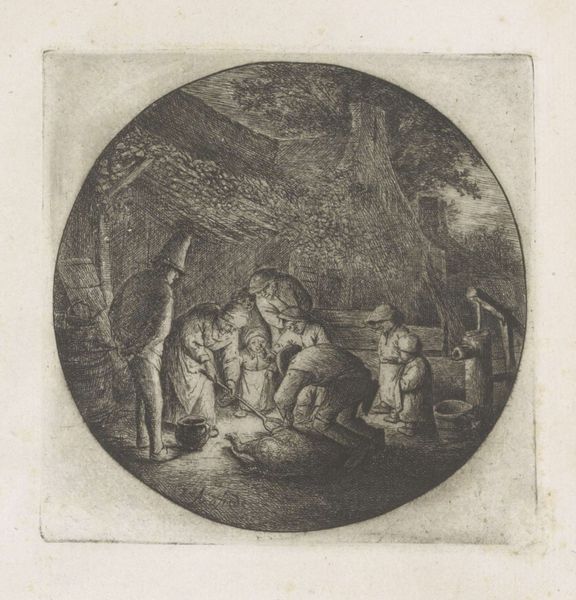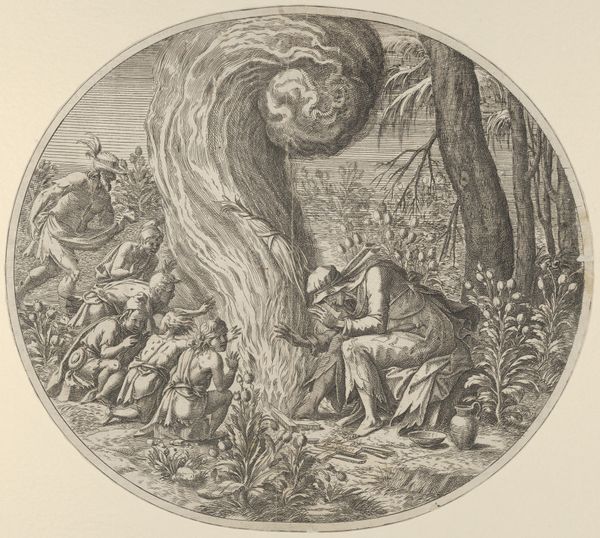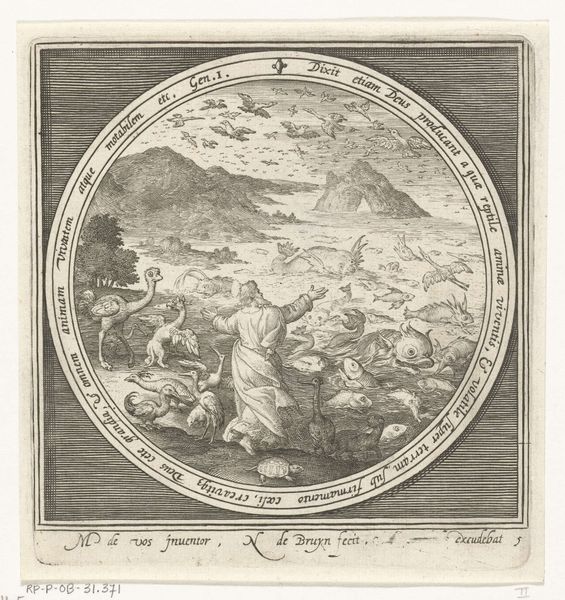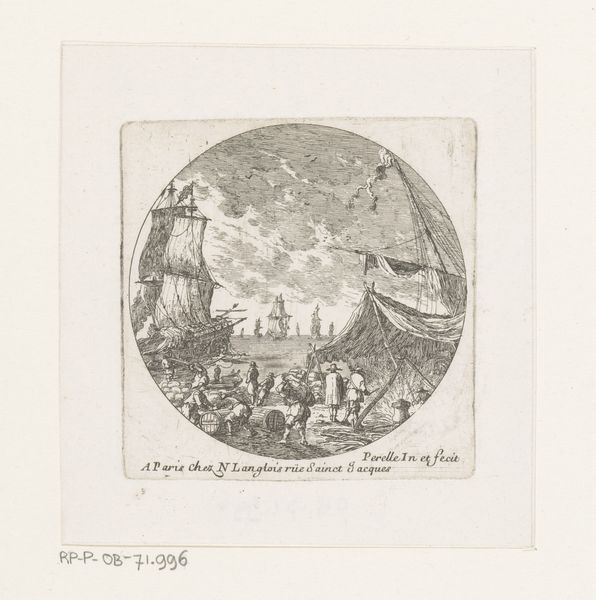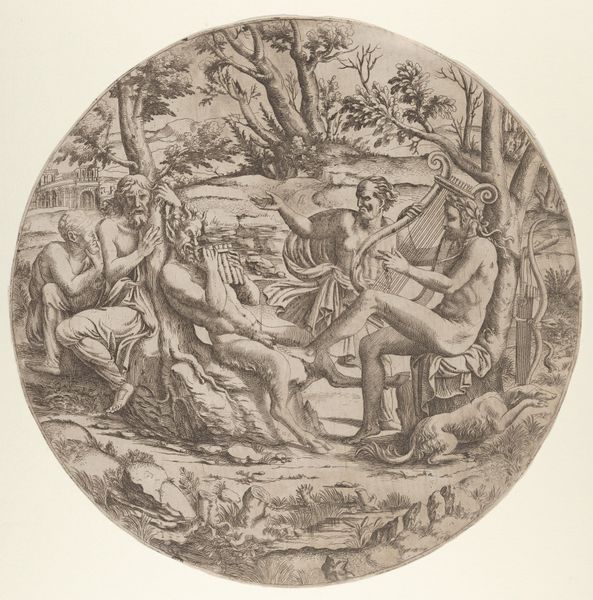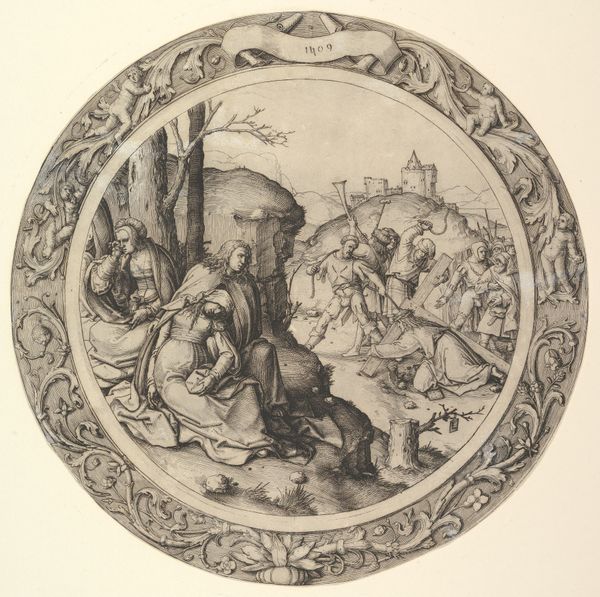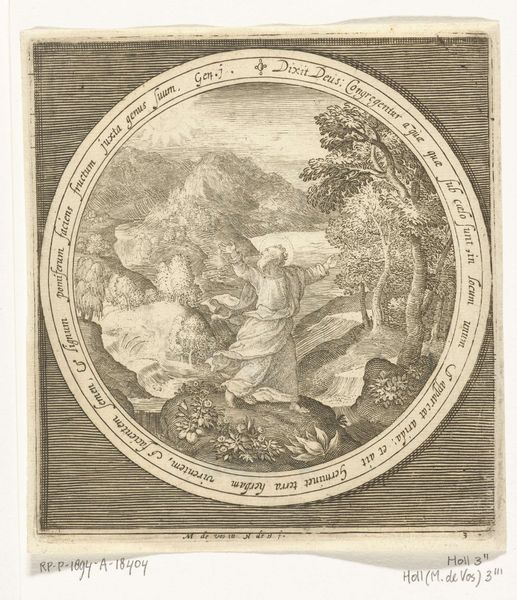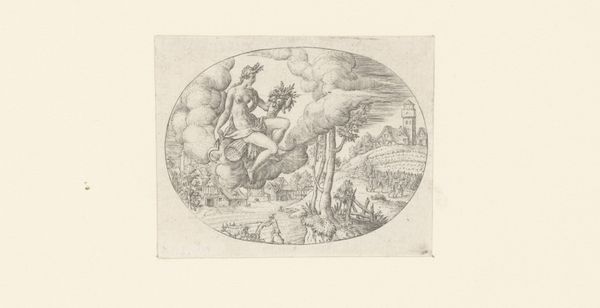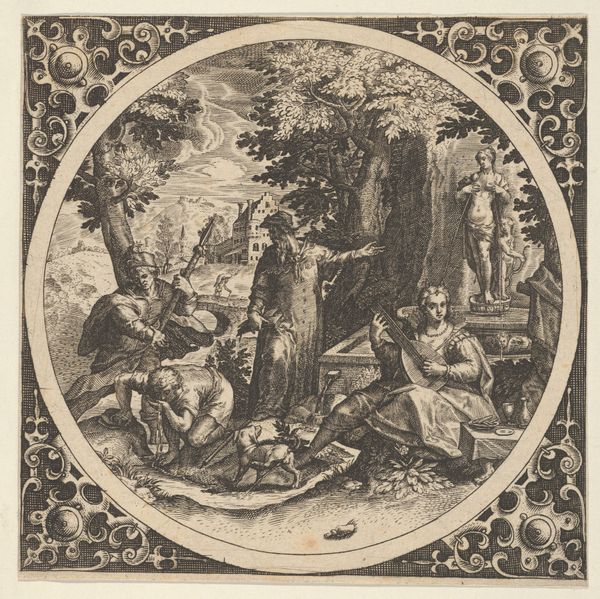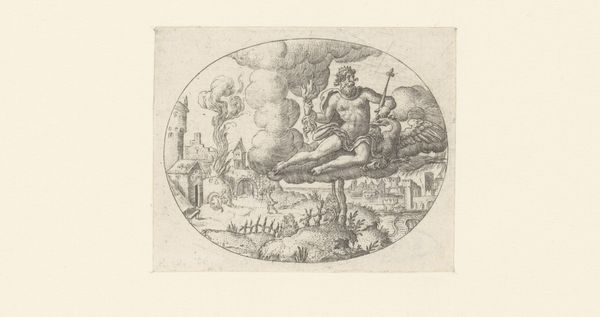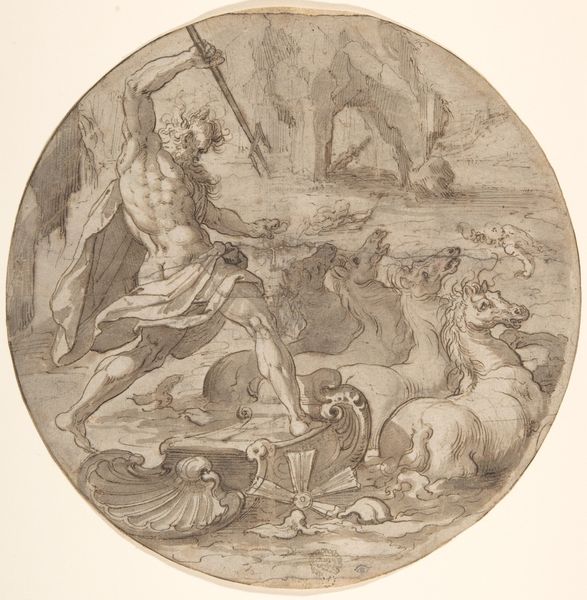
etching
#
dutch-golden-age
#
etching
#
old engraving style
#
figuration
#
genre-painting
#
realism
Dimensions: height 118 mm, width 118 mm
Copyright: Rijks Museum: Open Domain
Editor: Here we have "Boerenfamilie bij het slachten van een varken," or "Peasant Family Slaughtering a Pig," an etching by Adriaen van Ostade, dating sometime between 1650 and 1941. The scene feels both intimate and brutal, wouldn't you say? I am interested to know, what stands out to you about this piece? Curator: Well, considering its social context, this image normalizes something often hidden: the labor involved in producing food. Think about the rise of genre painting in the Dutch Golden Age and its market. Who was buying these images? Middle-class urban dwellers. How did this imagery shape their understanding of rural life and labor? Did it romanticize it or present a more realistic view? Editor: I suppose it depends on your perspective. For the urban viewer, perhaps it romanticized farm life? I'm curious about Ostade's choice to depict this event. Curator: Exactly! This isn't just about the everyday; it's about visually constructing an idea of rural life for a specific audience. Etchings like these were easily reproduced and distributed, meaning these depictions would have circulated widely, shaping perceptions. Does knowing that make you see anything differently in the composition, perhaps in the arrangement of the family and their tools around the animal? Editor: It's interesting. The composition is tightly packed, drawing our attention to the event but from a remove. We're observers. I also note how death of the pig is essential to sustaining this family. So this creates an economic image, beyond a moment. I guess Ostade shows how city and country are linked? Curator: Precisely. It's a depiction of interconnectedness, visualized and circulated. Now, how does understanding the historical consumption of images such as these change how we engage with them in a modern museum setting? Editor: That's food for thought, indeed. It shifts the focus from pure aesthetics to considering the power of images to shape social perceptions, and policies for exhibiting. Curator: Exactly! It's about uncovering the layers of meaning embedded in what seems like a simple genre scene.
Comments
No comments
Be the first to comment and join the conversation on the ultimate creative platform.
